2022 Quarter II Market Outlook
Yo! What’s good people of the internet. Almost decided not to write this, but I’ve quickly gotten bored while not tweeting incessantly daily, so during my break I’ve started leaving my thoughts here. I’m also pretty certain we are bottomed here, honestly would not be surprised if we get a rally into eom on most majors that paints these quarterly candles with long lower wicks. If I can finish most of this and it’s semi-coherent before I leave for the AVAX conference in Barcelona, I’ll probably post this so it’s up while I’m away from my computer. Otherwise I guess I’m just writing this to my future self to read later, so hello to Q2 Z. Firstly, let me preface this by clarifying that I am not a financial advisor, none of this is investment nor financial advice, and I have not taken any of those series 123 xyz tests, this is simply the text form of what goes through my head everyday when spending way too much time on the interwebs with wassie & anime pfps delving into the weird microcosm that is crypto.
If you’re a left curver on most macro things like me, then you likely did not have Russia invading Ukraine on your 2022 bingo card. When I sold some of my prized internet coins in November, it was because I saw the risk-off happening in the candlesticks, not because I had any inkling of the fundamental reasons why, other than that the FED may not be as happy go lucky with their money printer. Including macro analysis into my evals of crypto markets is definitely a weak point for me, something that I plan to remedy in the future. So maybe next time we have a global conflict I’ll be somewhere middle of the curve instead of on the left. Anyway, Q1 has been rough for most of the crypto markets outside of a few outliers, but oddly enough the worst of this downtrend has not been isolated to crypto markets, as we’ve also seen many tech and growth stocks also take huge hits due to global geopolitical risk and worsening macro conditions, while commodities & war stocks have done well (s/o the homie Schiff). A lot of these tech charts look identical to the rug pulls we saw during the first DeFi Summer in 2020, and these are multi-billion dollar companies employing a significant amount of people. Sending prayers for anyone who went into 2022 short volatility.
Bitcoin’s relative strength in particular here is critically important, considering that this is the first time in its’ history where its’ value prop should be on full display for the world to see. Many Ukrainians fleeing their home country due to the Russian invasion did not have access to their traditional financial systems after relocating, but as most crypto native people know, it was trivial for them to maintain access to their Bitcoin. We’ve seen Canada restrict citizens’ bank accounts for participating in protests that the government deemed unacceptable, and we’ve seen the Russian ruble lose ~50% of its’ value against the dollar in a few days. There has never been a time when it was more clear of the *why* non-sovereign money like Bitcoin is important, and the chart is reflecting that reality. Also, we’ve seen pockets of strength within the crypto markets, seeing some midcaps up 3-4x while the rest of the market tumbles, which strengthens my original thesis that we will continue to see bear markets in some sectors while we have bull markets in others.
"Going forward in 2022, we will see if the trend continues of certain sectors experiencing bearish cycles within a macro bull cycle for crypto, or if we will have another market wide -90% drawdown across the board like previous cycles. The difficulty for traders lies in determining what the current mispricings are in the market and how to take advantage of those, as well as finding which new trends are developing before the herd discovers them.”
- some guy in Brooklyn prior to a NYE pregame
Given crypto’s relative strength, I expect crypto to lead the recovery if investor sentiment on macro conditions improves. We’ve been ranging for the entirety of the quarter between 33k-45k and have not been able to make new lows since the day that Russia invaded Ukraine, which is also the day many boomer commodities like gold put in their local highs. In my eyes, the 30k-60k range for Bitcoin is multi-year re-accumulation and the trend that follows will be most similar to its’ ascent to previous 2017 highs in late 2020, the question is just how long this accumulation will last. Many alts are down 80+% from their highs in Q4, some have completely retraced their bull market rallies back to late 2020 levels, but some have been recovering much quicker than others. It is unpopular to be bullish here similarly to how it was unpopular to be bearish in November. I believe we’ve seen the peak of fear and uncertainty for the first half of the year and expect these accumulation ranges to break upwards in Q2, led by BTC and a few altcoin outperformers.
Quarter I Recap
Macro
From my brief stint larping as a macro-economics expert, I’ve determined there are four major things that would be bad for the markets if they were to happen and are not currently priced in:
Russian-Ukraine situation escalates to other nearby countries that are apart of NATO
FED raises rates faster than the market expects them to
Putin decides it’s a good idea to use nuclear weapons
China enters the arena aggressively with their own personal imperialist pursuits
Most of these things seem unlikely to me, and it’s more likely that we continue to deal with the existing Russia-Ukraine situation + current scheduling of Fed’s QT. But again, I am no expert on any of these things, and have been reading material from others who are much more knowledgeable than I am. Because of this I am mostly reliant on charts here, as I’ll be able to identify people going risk-on much easier from watching candlesticks than I will from guessing on the daily musings of Putin & Xi. Particularly these two articles have given me a good general overview of the current situation and macro backdrop, with how it might play out in a few different ways.
https://cryptohayes.medium.com/annihilation-4effdaf3c73f
https://fabricegrinda.com/the-great-unknown/
Bitcoin
Bitcoin is squarely in the center of its’ first mid-life identity crisis. The purported safe haven of digital gold that has traded as a risk asset alongside high growth names for the majority of its’ lifetime is now in the limelight during times of high inflation and a global conflict. So, how will it perform? I’ve been called foolish by many people for asserting that BTC will no longer trade as a risk asset in the near future, given its’ history of parabolic advances and steep declines. From my point of view this has changed in the past two years. In all previous BTC cycles we’ve seen parabolic blowoff tops followed by lower highs + lows until the timeline nears the next halvening, at which point we begin the cycle anew. In contrast, this cycle we had Bitcoin trade near its’ highs of February 2021 for multiple months before selling off in May, which was followed by re-accumulation in the summer and a retest of those highs from earlier in the year during Q4 2021. We’ve established a 400+ day trading range in this area, unlike the price action of 2018 which was consecutive lower highs.
If Bitcoin is unable to do well with the current existing macro backdrop, then it has failed in its’ intended use case as an asset, which is why I think it’s extremely unlikely that the current range breaks down. I believe that there are primarily two groups of people buying/trading BTC, those that trade with other risk-on assets and those that are accumulating it long-term for situations like the one we are living in currently. The latter group grows more everyday while the former group will continue to shrink in size, there are many better opportunities within the crypto space for those looking to put on more risk and as more money enters the space I think that new money will diversify their strategies accordingly. I cannot emphasize enough that I think it’s ridiculous to be bullish gold and bearish Bitcoin at the same time. I have high confidence that any outperformance of gold over BTC will be remedied extremely quickly. If you are bearish on crypto as a whole for the year and expect mostly chop, I think there are a lot of alts that are still overvalued and could be good short hedges on rallies against your spot BTC holdings.
Ethereum
I’ve already covered in detail most of my opinions on Ethereum in my last writeup, so won’t really expound upon those here as not much has changed. I still believe that when the market is risk-on that it’s easily doable to find other alts that will outperform ETH, and when the market is risk-off I think BTC has a stronger narrative here than Ethereum. For the merge I think the strongest play is Lido, the liquid staking solution, as it benefits in a large way for users who want to participate in ETH staking but still want access to their funds to use in other parts of DeFi. They recently had a round led by a16z, who have said that they’ve used the service for staking their ETH leading up to the merge. Lido is positioned well to support institutional investors as well as retail investors with their service, and also have support for other L1s as they are multi-chain.

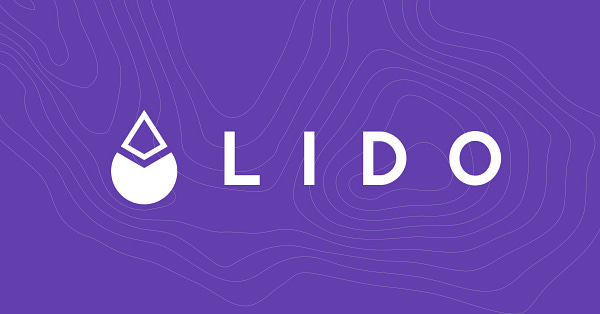
My guy @tolks1189 has done a great job of recapping some of the updates going on in ZK land here:
General Crypto Market
Although prices have not reflected it, the money and mindshare pouring into the crypto space over the past few months has not slowed down at all. We have seen many new funds springing up, crypto native funds raising, collaborations between traditional companies and crypto natives, NFT partnerships, and much more. There is no better source for daily information on crypto than Darren Lau’s The Daily Ape I still have no idea how he keeps up with everything going on every day. Some of the notable things that have happened:
There has honestly been way too much to keep up with here, but it’s clear that there are a ton of eyes on the crypto markets right now.
Miscellaneous
Strange Clans first NFT marketplace launches on JUNO
Aurory whitepaper + game design release
Yuga Labs (BAYC) buys rights to Punks & Meebits, allows users control of IP
Quarter II, 2022
Main focus for me will remain Cosmos ecosystem alongside a BTC recovery, have been taking profits from outperformers like OSMO & JUNO and rolling those into LUNA & RUNE and cut a lot of things that weren’t doing well, but likely will continue to stay within this ecosystem for the rest of the year. To me the endgame of the multi-chain world looks like application-specific blockchains all cohabitating with each other and ease of communication between each of them. We have still not scratched the surface of what is possible with IBC, and I am excited to see how Interchain accounts and IBC-enabled smart contracts work once implemented. As the crypto market matures, we are going to see less useless tokens just tacked onto applications that do not need them, and more tokens for which their demand is tightly connected to the overall protocol’s growth. It is not a coincidence that all of the top performers for the quarter were protocols with strong tokenomics. I’ve consolidated most of my infrastructure plays into POKT & Genesys Go, both are down significantly over the past few months but expecting them to do well if the market turns around. For GameFi, am still bullish on DFK, development pace has not slowed down at all during the market downtrend and we’ve yet to see how the game will function once its’ in-game economy is fully flushed out with guilds, land, pvp, and its’ first cross-chain expansion onto an Avalanche subnet. Waiting on Strange Clans second release of NFTs and the beta launch for Aurory, Treeverse should be sometime later in the year. If I’m correct about a relief rally here I’ll be looking to derisk most things towards the end of the quarter, don’t expect majors like btc & eth to go directly back to all time highs so will look to derisk into lower highs before more consolidation.
Strength in the Cosmos: Osmo, Juno, LUNAtics and THORchads
If you’ve been heavily allocated within the cosmos ecosystem then you haven’t experienced most of the downtrend of the rest of the market. Osmo & Juno as the two main cosmos alts other than Atom have been mostly in uptrends while other alts are down 80-90% from their all time highs.
As the main dex in the cosmos eco, Osmo benefits greatly from IBC growth overall especially since we are in the early days of Cosmos DeFi. Unlike other dexes that run on layer 1s with many other applications, Osmo is both its’ own chain and its’ flagship application, so it is not restricted like other AMMs. There are two major innovations that separate it from other dexes, which are possible because it’s designed as an appchain specifically for this use case.
Customizable AMMs & sovereign liquidity pools
Cross-chain functionality w/ IBC assets
Osmo’s recent launch of superfluid staking is novel as well, which allows users to stake their assets that they have in LP pools while they are bonded. The dev team and community surrounding Osmosis is very strong and they are aligned with their core vision of the Cosmos Hub and IBC cross-chain functionality.
Juno has positioned itself as the premier cosmwasm L1. Most of its’ supply was airdropped to Atom stakers and its’ core ethos is to be a community-oriented protocol focused on cross-chain smart contracts. At a much smaller valuation than most of the other L1s, Juno has a lot of momentum to and room for upside if they are able to succeed in being the first place that novel dApps are launched other than on Luna. I really dislike the most recent prop 16 governance proposal, which proposes to remove funds from one account since they apparently received the stakedrop on multiple addresses. I think it sets a bad precedent to be able to restrict individual users in that manner and hope that it does not pass or at least gets re-written to some degree.
From the Q1 writeup,
“Terra Luna is the only play in the crypto space where you can directly bet on the growth of stablecoins and the growth of layer 1 smart contract ecosystems at the same time. For this reason, LUNA is my favorite out of all of the largest layer 1s going into 2022 and I’m betting that their ecosystem growth, stablecoin growth, and also the growth of IBC in general will propel them above other competitors.”
Anchor is one of the only applications in Q1 that has substantially increased its’ TVL on its platform, with $15.7B in TVL it is only ~$3B behind AAVE, and this uptrend should continue with the addition of new assets like sAvax and the release of Anchor v2. The Luna Foundation Guard’s decision to buy Bitcoin to add to their reserves to back their stable $UST will make Terra USD more resilient to market selloffs and also increase confidence in the ecosystem. A large part of this bootstrapping phase for Luna is building confidence in their stablecoin, both from retail and institutional investors. They’ve already garnered strong backing from big names like Jump, Alameda, and 3AC, and $UST has been able to hold peg during times of peak market volatility. As their treasury grows and $UST grows bigger the risk of de-pegging also becomes less likely. There are also systems being put in place to evaluate risk within the system like Kujira and Risk Harbor, wouldn’t be betting against Do Kwon and co this year. Because growth of $UST is directly correlated to reductions in supply for LUNA, this growth continues to have a significant effect on its’ price.
In addition to Terra USD’s growth, DeFi on Terra is beginning to pickup as well. Astroport, Terra’s main dex, has been consistently doing over $200M volume daily, with liquidity rivaling that of Osmosis. Currently most of the trading volume comes from the Luna-UST and bLuna-Luna pairs, but as more dApps launch and become popular Astro should see more activity. There are a few other innovative protocols that have launched recently in the Terra ecosystem that don’t have much competition from existing DeFi protocols, so it will be interesting to see how much market share they are able to capture over the next few months.
Thorchain (RUNE) was one of my favorite bags in 2021 alongside Solana. It has been less popular over the past year after a couple of hacks last summer, but the builders have continued working steadily in the background. Rune’s core focus is being a cross-chain dex that allows native swaps between different chains. Thorchain’s design requires bonding nodes to post 3x more Rune collateral than the other assets that are being added for liquidity, so as the TVL within Thorchain grows, demand for Rune grows with it. What’s most interesting to me about Rune’s community is the genuine interest from Bitcoiners, since they are typically not very interested in ETH or DeFi. If that target market of hodlers is able to be accessed, it’ll be extremely bullish for Thorchain and its’ future. There is a ton of BTC that is currently not getting any yield and for people who are very comfortable passively buying and holding low-risk yield should be one of the most attractive value props. In the past, Rune has had issues with hacks, so rebuilding investor confidence there will be really important moving forward.
Recently, its’ launch of Thor Synths and upcoming Luna Integration have been fundamental catalysts spurring conversation as Luna has been a top performer, plus the connection between BTC holders → Luna holders would connect the most decentralized hard money with the most popular decentralized stablecoin. In short, Thor Synths allow users to deposit Rune and receive a synthetic version of their desired asset that already exists as a Rune-paired LP on Thorchain. Thor Synth holders benefit from lower fees and faster confirmations than native to native swaps as these assets exist on the Thorchain blockchain, while LP holders benefit from increased revenues due to synth holders giving up their share of the LP to get access to one asset directionally. These are the first portion of Rune’s ThorFi products, which will include borrowing/lending and single-side savings accounts in the future. Rune’s tokenomics rival those of Luna and both protocols are positioned well to continue attracting liquidity from the rest of DeFi.

GameFi vs. DeFi yields and speculative premiums in the metaverse
Where does the yield in crypto come from, and who are the users of these platforms? Yield farming has been one of the most popular activities for new DeFi users, and it has come in many different forms, almost all of which have led to poor price action for the associated tokens that are being farmed by new users. One of the questions that I’ve been thinking through is which designs will stop this trend, or if this will just be the case for all DeFi applications that use token emissions to incentivize users. Recently, with the introduction of GameFi, I think that we’ve seen a novel approach to determining the valuation of these tokens because these games introduce a new group of users to the protocol. To compare GameFi to DeFi, we can first look at where the yields come from in regular DeFi applications like dexes or lending/borrowing platforms. For most lending platforms the yield comes from three main sources:
token emissions
speculators
borrowers using the protocol
A ton of the DeFi applications are inherently inflationary, as they pay out users rewards in their own native token, so a portion of the rewards come from these emissions. Also, there are always speculators who buy/sell these tokens, but rarely use the platforms. This is not directly affecting your APR but it does affect your ROI from yield farming. If you are an early user of a platform before it’s popular, you benefit from more speculators betting on the success of the project in the future. Lastly, borrowers who want to use leverage will pay variable rates to those willing to lend out their assets. For yield farming on dexes, you can replace borrowers with the fee payout associated with providing liquidity to LPs.
If an in-game economy is designed well enough that there are people playing the game in addition to basic users of the protocol, then it adds another layer of demand to the system that did not exist before. With Axie, there was a completely separate group of users playing the game that had no prior relationship to crypto, but the system wasn’t necessarily designed that each individual user was a net positive to the demand for the protocol’s tokens. Most of the Axie scholars who rented out Axies from guilds or other larger players in-game would immediately dump their rewards earned from playing, which is why the SLP chart has been mostly down only.
token emissions
speculators
borrowers [lending protocols] or LP fees [dexes]
players
Players who are actively invested in playing a game competitively will be incentivized to buy & use the token in-game, a reality that will never exist for strictly DeFi products. We have not seen yet a game fun enough to have long term sustained players within the system, but if a game is able to create an ecosystem like this, it gives users the ability to augment their yield by playing the game actively. DeFi Kingdoms is the closest example of this that I’ve seen, which is one of the reasons I’m bullish on DFK in the long term. An example of this in the DFK ecosystem are the heroes and different pricings of higher level heroes in the tavern. The current floor for common heroes is ~35 Jewel, while the floor for heroes with 10/10 summons is ~95 Jewel and the floor for level 1 heroes is ~35 Jewel while the floor for level 6 heroes is ~69 Jewel. There are only 90 total level 6 heroes listed on the market out of 41,000 total heroes while there are pages and pages of level 1 heroes in comparison.
That’s about a ~100% return over the past few months for nothing other than putting in the time to level up your heroes by doing the quests in-game, and this is prior to any advantages being out for higher level heroes like advanced quests or pvp. The only reason that this premium exists is because of other players in game who are valuing these NFTs more than other ones. No other pfp project has this functionality, where you are able to make your assets more valuable by spending time within a protocol’s ecosystem. The only thing that affects prices of other NFT projects without utility are speculators, but NFTs that are incorporated into a well-designed in-game economy also benefit from having increased utility the more you actively play the game. I’ve said over the past few months that I think the best returns from DFK will be from leveling up your heroes and finding the best summoning strategies because later on there will be no way for people to catch up for lost time if they want to buy the best heroes in-game other than paying the market premium. As more incentives rollout for stronger heroes in game that will allow users to be more profitable with their yield farming in liquidity pools, or increase their likelihood of returns of rare items from doing quests, the difference in these prices should continue to widen. One of the upsides of playing DFK is that the intricacies of the game are largely hidden from outsiders who are not actively looking into the ecosystem and how it works under the hood. For example, most are unaware of how much additional yield you get from using a set of higher level gardeners on your LPs or how useful having a set of miners is for getting early rewards because you’d have no way of knowing those numbers unless you were playing the game and took the time to calculate them yourself. I’m not going to do the EV calculation here, but if you want to see the value of gen 0s it’s worth checking to see how many heroes with 10/10 summons there are in the tavern that are also level 5 or higher.
Mr. Zipper does a great job of analyzing the DFK Hero market in his weekly updates, so you can more accurately see the hero distribution and how the inflation works as more people summon lower level heroes.
https://medium.com/@MrZipper7/the-heros-hold-18-march-14-2022-d960c3976cbe
One thing that exists in both DeFi and GameFi protocols is the speculative premium that will always front-run product development. Because of how momentum driven crypto is and how much outside capital comes into this space during bull runs, market valuations often overshoot the speed at which teams deliver on their milestones. The difficulty arises in determining how much of a premium currently exists on the alts your holding & what the fair value is for those projects once pure speculators have left. We’ve seen retail completely leave most of the altcoin markets in the past few months, evidenced in part by the extremely low gas fees on Ethereum recently and also the lack of a premium in derivatives.
Dispersion in crypto-assets, the varying levels of rektedness
I’ve been preaching the rotation game for awhile now, as I think the current environment is vastly different than it was in prior years with altcoins. No longer can you just spray and pray at anything listed on bittrex and binance, but there is actual difference in fundamentals between these coins. Trends change extremely frequently and not being able to adapt as the market does is very very expensive. One may point to the ludicrous dogcoin season we had during Q2 2021 last year to disprove this, but I don’t think that’s an accurate gripe either. Fundamental analysis in crypto should also include consideration of the participating demographics buying & selling these coins, plus, memetic value & communal enthusiasm is unironically a very strong indicator of momentum (to the upside and to the downside).
So, lets look at some different altcoins and their various levels of rekt in the past quarter to the past year. As I’m writing this I genuinely believe these are all due for rallies to the upside, but it’s important to determine which ones have been the most resilient and which are likely to recover the fastest.
Super Rekt: Compound
307 days since all time high
-89.9% down from all time highs
COMP and many other “DeFi blue chips” have had similar price action after their first run up in early Q1 2021, more accurately, most of them topped in ETH terms around August 2020 so almost a two year bear market
calls for another -90% drop from here seem unwarranted, given that BTC & ETH have been ranging for a few months now without making new lows, but these wouldn’t be the first tokens that I’m buying here
Interestingly enough, it took ETH ~330 days to find a bottom after its’ all time highs in 2017, before going sideways and starting a new trend again
Rekt: DeFi Kingdoms
62 days since all time high
-85% down from all time highs, 71% down from yearly open
Jewel and many other of the metaverse names have been crushed as well, though not as bad as many of the early DeFi names since these have not been in a downtrend for nearly as long + outperformed market in Q4
haven’t seen any strength of recovery in the metaverse names yet, DFK has catalyst with Crystalvale launch at eom but we’ll see how market responds if we go risk-on again
Slightly Rekt: Bitcoin
126 days since all time high
-52.4% down from all time highs
Bitcoin is down like many other assets, but still holding up better than ~90% of altcoins and even better than some tech names
it seems likely that BTC will lead the way out of this recovery if we are going to get one this quarter
Rekt but Recovering: Thorchain
301 days since all time high
at bottom, 85% from all time highs, but up ~150% off the bottom and now green on the year which is only true for a very small % of coins
there is another group of alts that have tested their lows from summer 2021, some bouncing harder than others, RUNE has some fundamental catalysts helping it here that seemed to be timed well
Close to ATHs: Terra Luna
5 days since all time high
at bottom, -58% down from all time highs, now 14% down from highs
LUNA has led the recovery out of the recent sideways price action and has definitely shown the most strength out of any of the alts in the top 10, leapfrogging Solana in market cap
expecting this outperformance to continue if we get sustained trend, as LUNA also led the recovery last summer after Axie
Not Rekt: Juno
10 days since all time high
-22% from all time high
one of the few alts that has been trending up for most of the year, around 4x on the year at its’ peak
If you’re a passive investor and risked off Q4, think you have two clear triggers here on BTC: reclaim of the yearly open around $46k, or capitulation towards the summer 2021 lows around $28k. Personally I lean towards the former happening first but I think those are equally fair spots to rebid if you’re not actively watching the market. If you’re are actively trading, then you should be looking for possible strong narratives before they are general consensus because it’s clear there will still be those that outperform even during downtrends within most of the market.
Conclusion
Q1 Reflections
be more cautious when aware of lack of edge [i.e. lack of knowledge on macro]
more concentrated bets, less diversification when no strong bias
be more diligent about using hedges, pair trades are much more important when market is overall bearish
appchains appear to be the current meta, have much stronger tokenomics than regular governance tokens
Favorite Pair Trades
long Luna / short Eth
long Rune / short Fantom
long BTC / short Doge
long Avax / short ONE
Some bold predictions for the quarter:
BTC trades @ ~60k again
ETHBTC trades lower than .055
Anchor flips AAVE in TVL
Astroport flips Pancake Swap in avg daily volumes
ETH gas fees stay low as people stay on alt L1s & more start using rollups
10+ AVAX subnets launch attracting new users
Solana becomes primary hub for on-chain perps & options
Other interesting stuff worth looking into:
Axelar
LayerZero
FuelLabs
Agoric
Celestiums
Starknet & L3s
Danksharding
Katana
Drift Protocol
Argent mobile / Phantom mobile / Keplr mobile
Risk Harbor
Ragnarok
Catalog on Ren Protocol
KyberSwap on Arbi
Pokt v2
Well, let's hope Powell doesn’t decide to raise 1000bps! If you’re going to be in Barca hmu my TG is same as my Twitter, GL lads



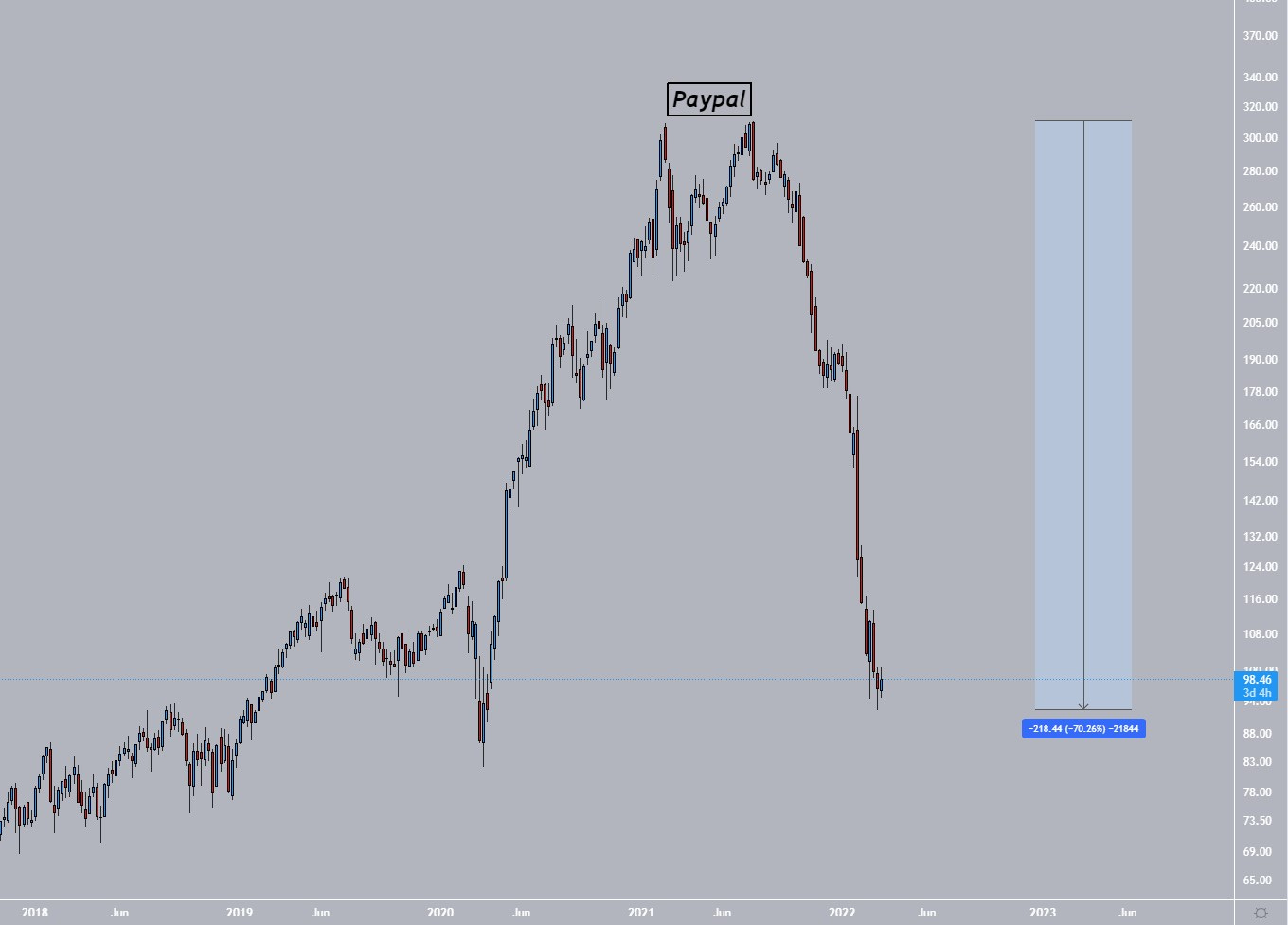


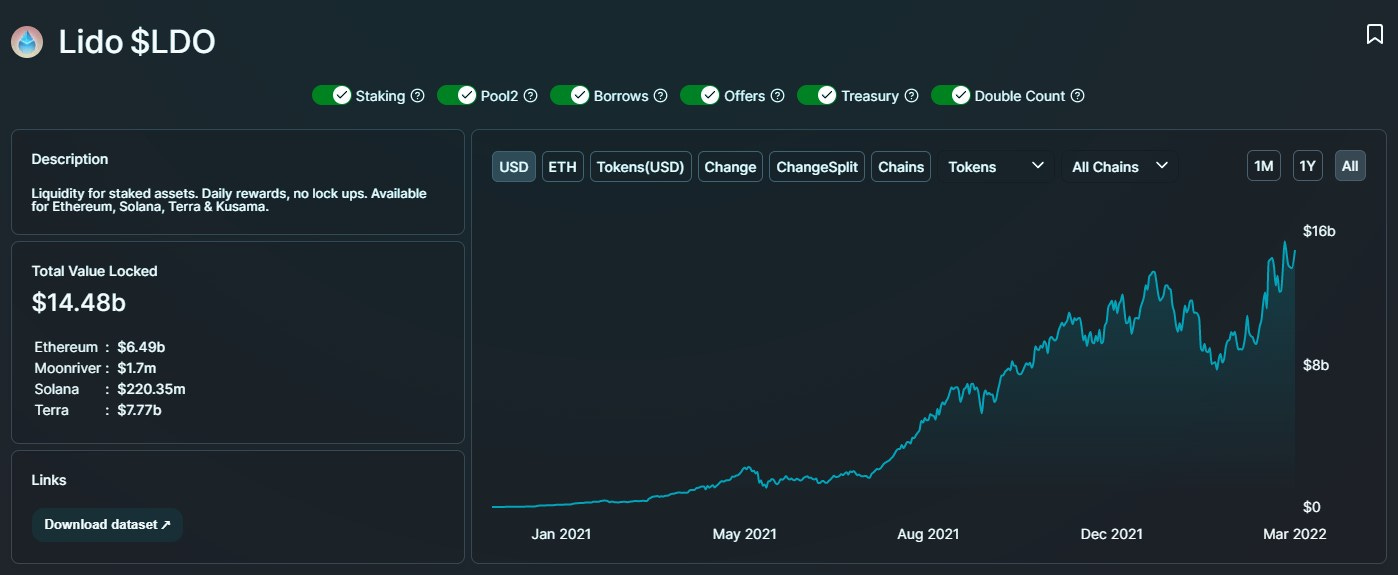
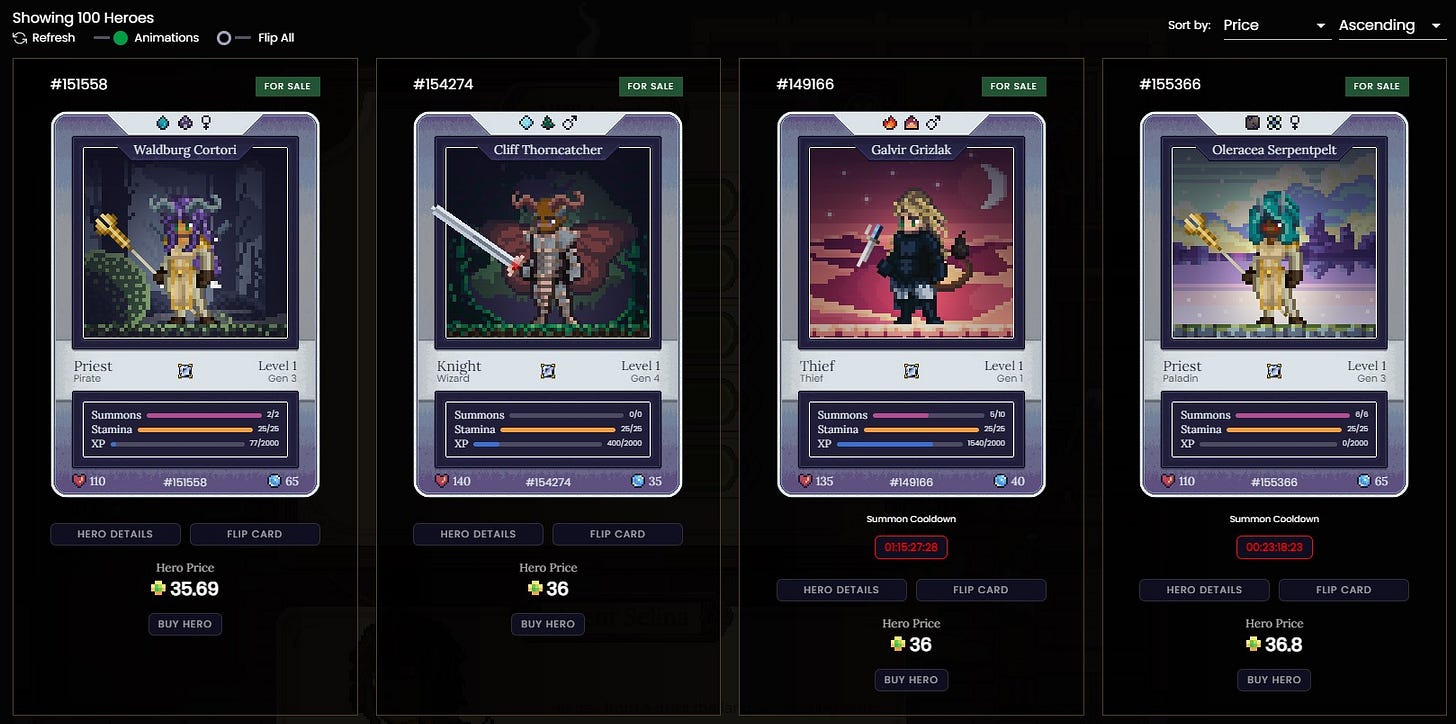
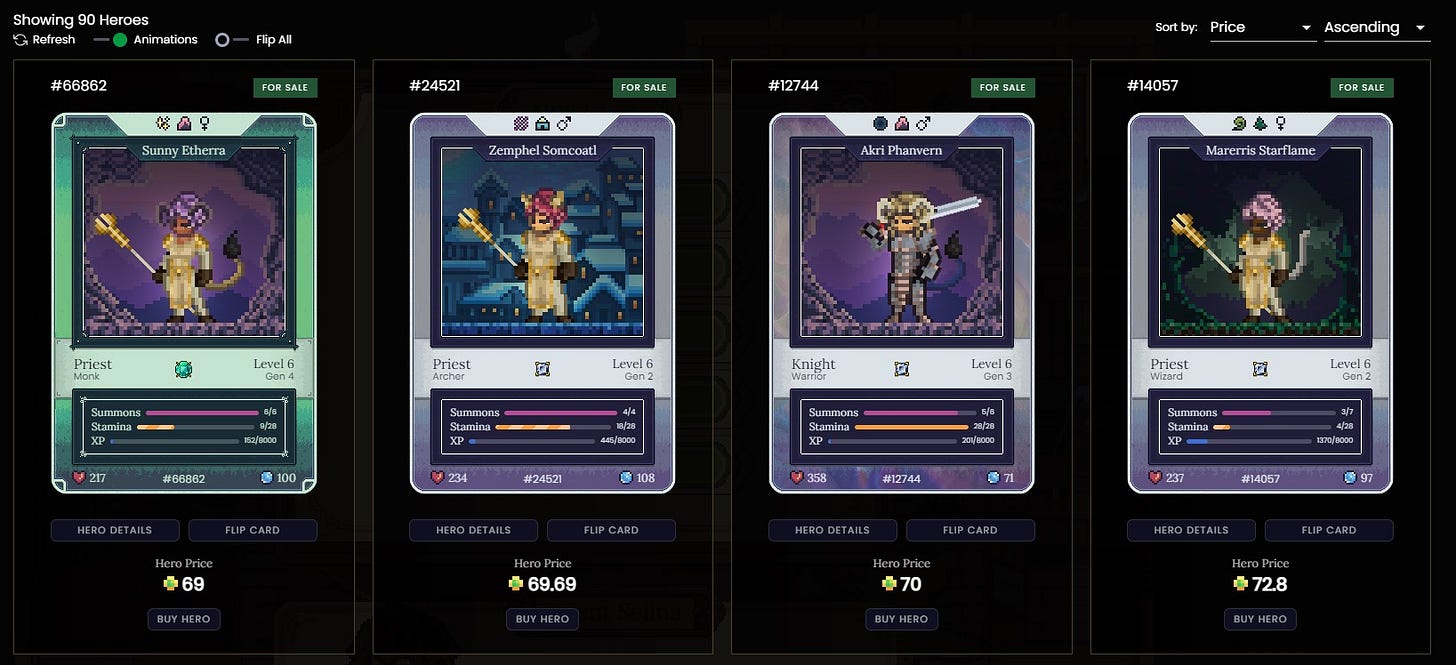

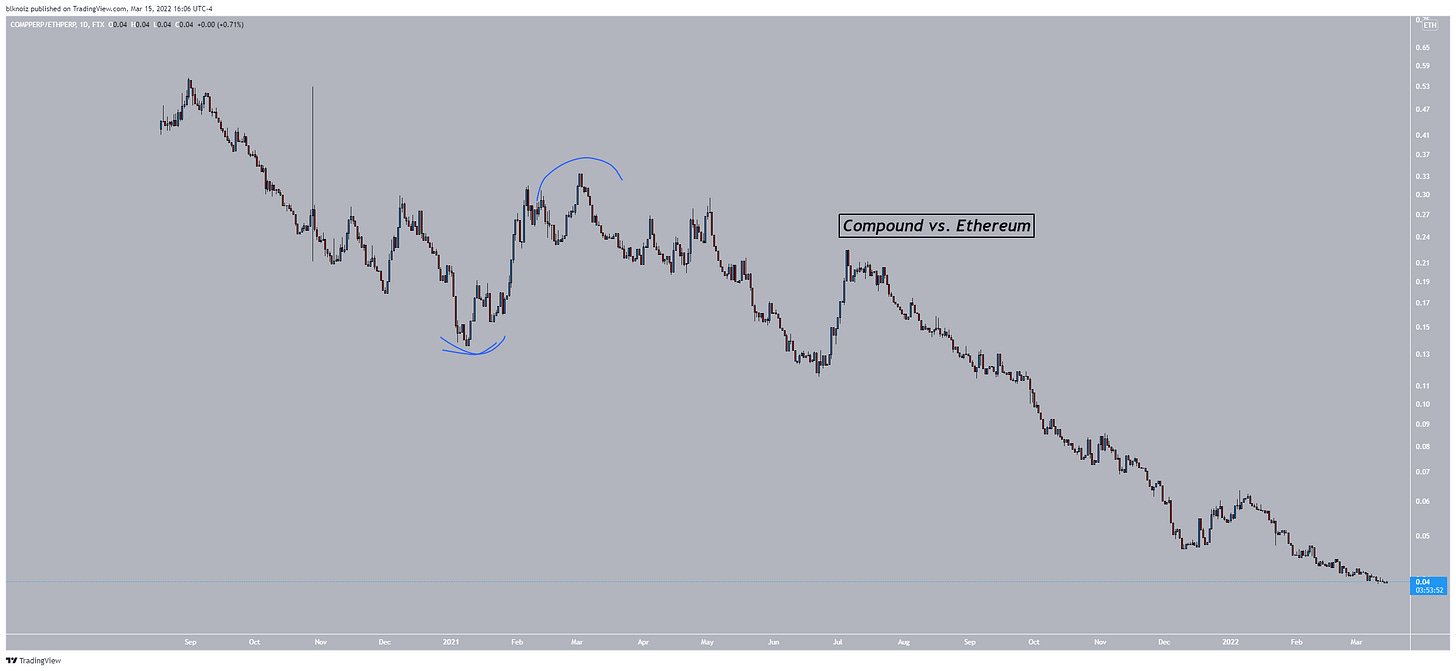

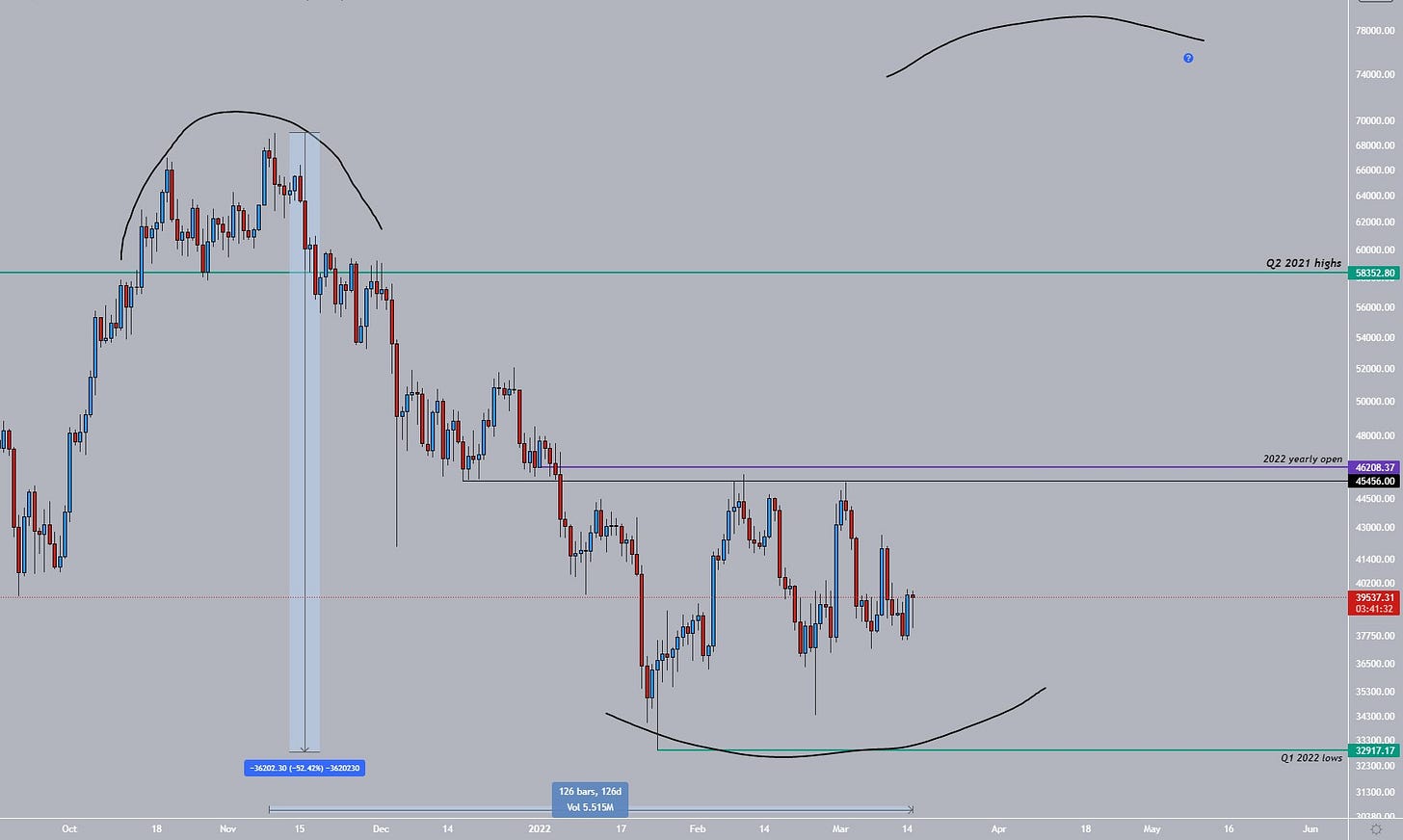


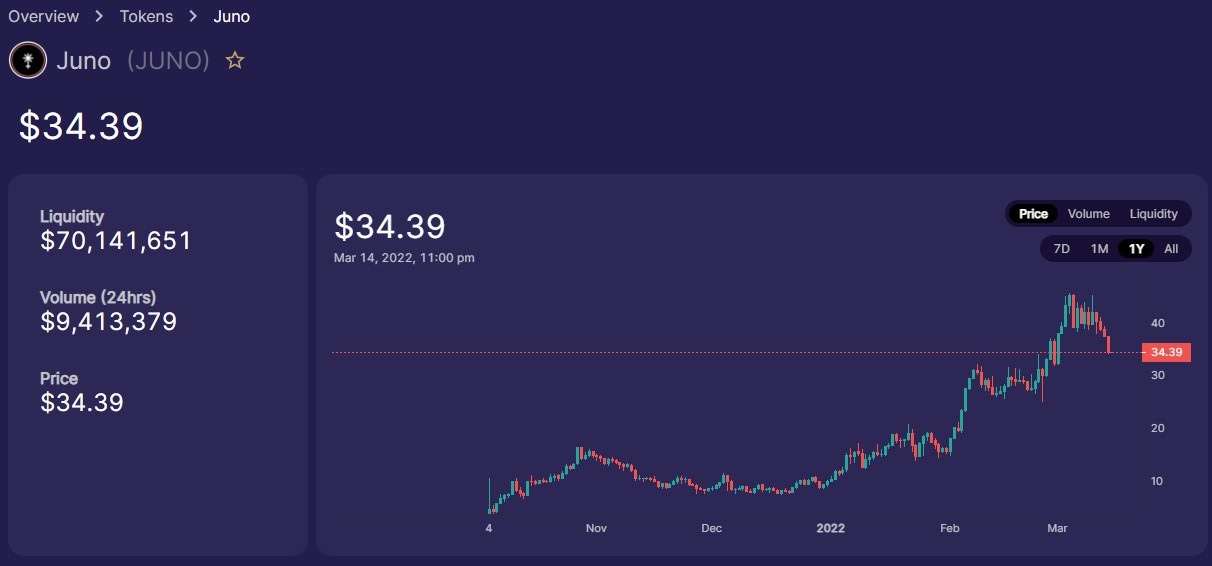
damn how is this free. also super interested in Ragnarok but haven't had the time to deep dive it out
such a quality read for free, thanks Z !